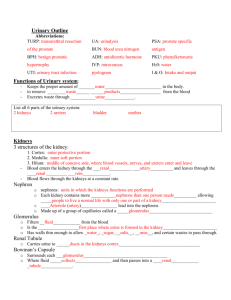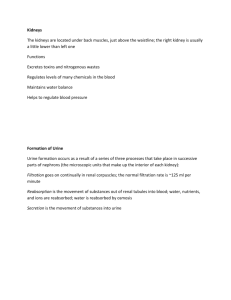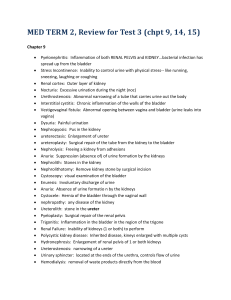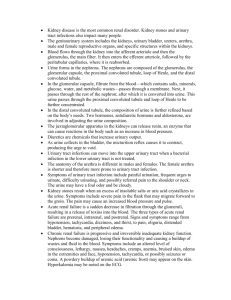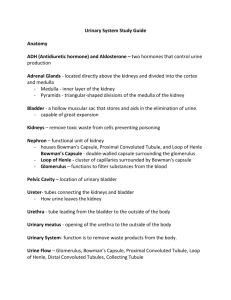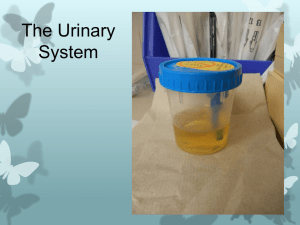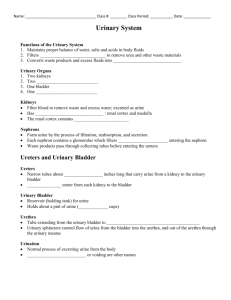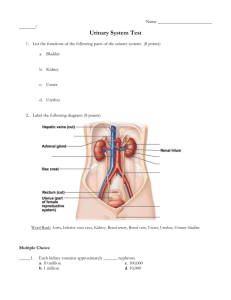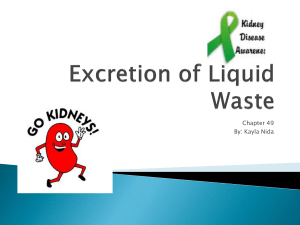Kidneys
advertisement
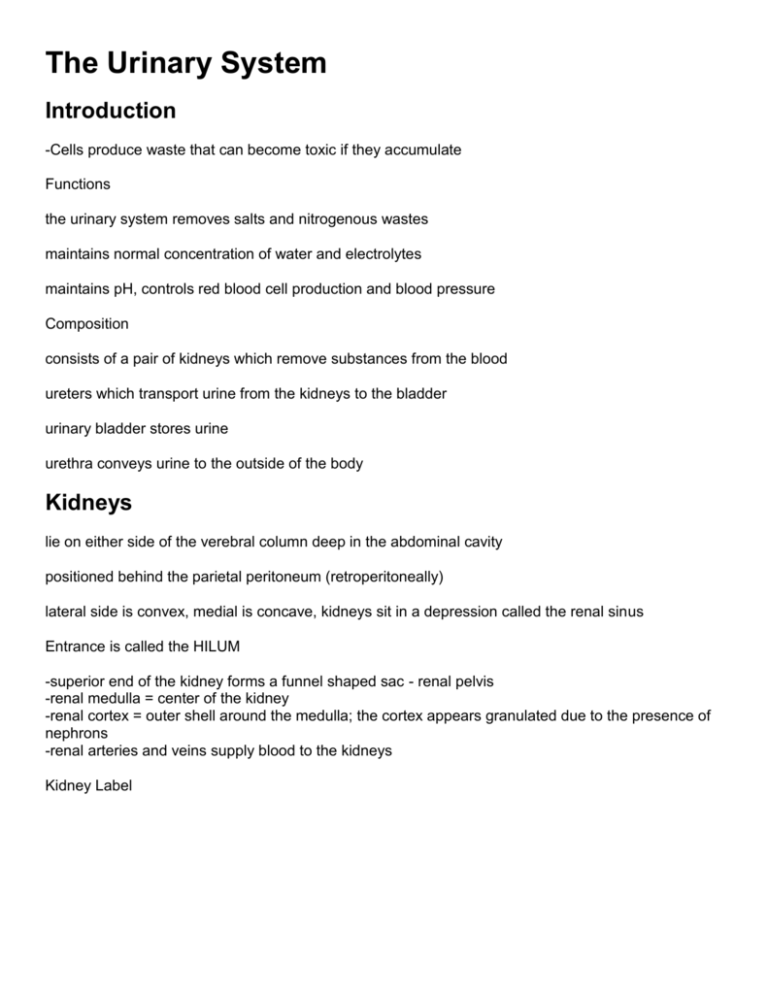
The Urinary System Introduction -Cells produce waste that can become toxic if they accumulate Functions the urinary system removes salts and nitrogenous wastes maintains normal concentration of water and electrolytes maintains pH, controls red blood cell production and blood pressure Composition consists of a pair of kidneys which remove substances from the blood ureters which transport urine from the kidneys to the bladder urinary bladder stores urine urethra conveys urine to the outside of the body Kidneys lie on either side of the verebral column deep in the abdominal cavity positioned behind the parietal peritoneum (retroperitoneally) lateral side is convex, medial is concave, kidneys sit in a depression called the renal sinus Entrance is called the HILUM -superior end of the kidney forms a funnel shaped sac - renal pelvis -renal medulla = center of the kidney -renal cortex = outer shell around the medulla; the cortex appears granulated due to the presence of nephrons -renal arteries and veins supply blood to the kidneys Kidney Label Renal Arteries & Veins Arteries attach to the abdominal aorta Veins attach to the inferior vena cava Interlobar arteries pass between the renal pyramids Afferent arterioles lead to the nephrons NEPHRONS - functional unit of the urinary system Quick Analogy: A nephron is to the urinary system as the ______________________ is to the nervous system -each kidney contains about 1 million nephrons -renal corpuscle: composed of a tangled cluster called a glomerulus which filters fluid Pathway = glomerulus -» proximal tubulue --» nephron loop (also called loop of henle) --» distal tubule --» collecting duct --» ureter --» bladder Also see Kidney and Nephron Coloring Urine Formation glomerular filtration - urine formation begins, plasma is filtered tubular reabsorption - returns most of the fluid to the body - PROXIMAL TUBULE tubular secretion - removes what is not needed; produces urine - DISTAL TUBULE Urine Composition 95 % Water Contains urea and uric acid (characteristic smell) Can contain trace amino acids Urine may also contain other chemicals that can be detected. Hormones present in a pregnant woman are detectable in urine *Diuretic – any substance that increases urine production Urine Elimination After urine forms in the nephrons, the ureters (starting with the renal pelvis) carry the urine away to the bladder Bladder is an expandable structure that stores urine before it is eliminated from the body. Transitional epithelial cells change shape to allow for expansion and contraction. Micturation = urination; as the bladder fills this reflex occurs though it is also under voluntary control Detruser Muscles – muscles that attach to bladder and sphincter that control urination Urethra = tube carries urine to the outside of the body Disorders Related to the Urinary System Kidney Stones Extracorporeal shock wave lithotripsy (ESWL) is a procedure used to shatter simple stones in the kidney or upper urinary tract. Ultrasonic waves are passed through the body until they strike the dense stones. Kidney Failure – kidneys no longer filter substances from the blood. This can result in death if not treated with dialysis. Eventually a person will need a new kidney. Causes of kidney failure vary. Cystitis = bacteria enters the bladder or kidneys (kidney infection); more common in women because the urethra is shorter Commonly known as a "bladder infection" Overactive Bladder = sudden contractions of the bladder produce sensation of urgency, also more common in women Incontinence - inability to control urination (or defecation)

